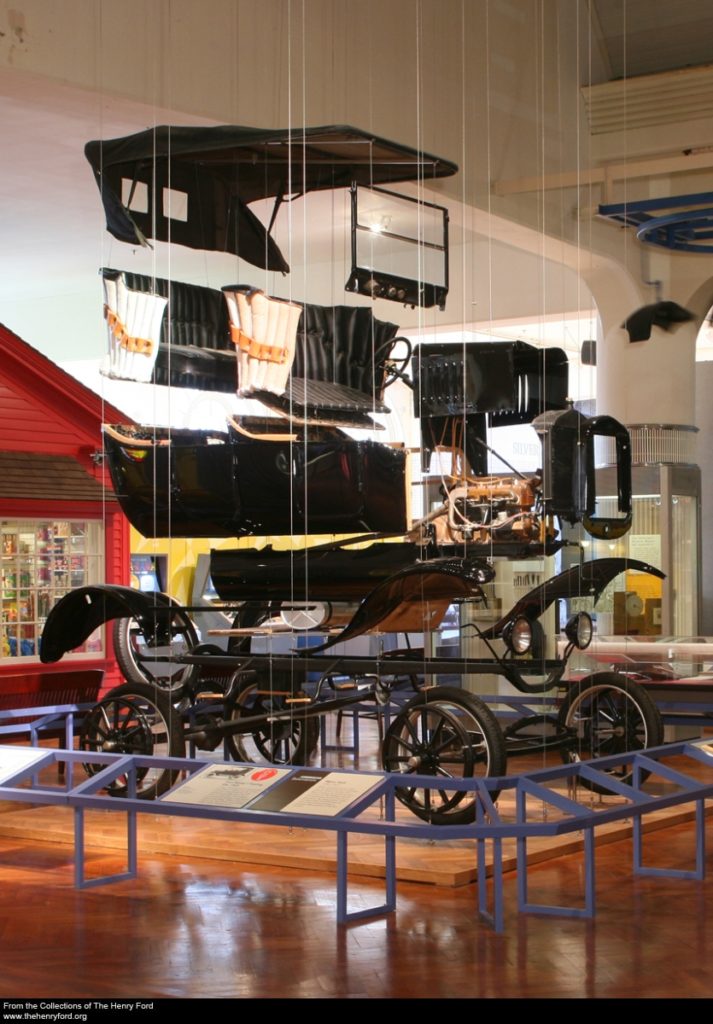

Courtesy, Winterthur Museum, Court Cupboard, possibly made by the Emery Shop, Newbury, Massachusetts, Red Oak, Sycamore, Black walnut, Tulip Poplar, Pine, Bequest of Henry Francis du Pont, 1966.1261.
Today a colleague pointed me to a classic in the study of material culture, E. McClure Fleming’s “Artifact Study: A Proposed Model.” In this essay, Fleming outlines a systematic process for interrogating artifacts: Proceeding from “Identification” and “Evaluation” and on to “Cultural Analysis” and “Interpretation.” Fleming’s idea is that careful scrutiny of an artifact’s materials, manufacture, design, and provenance provides a means to learn about the people responsible for the artifact, their social world and cultural life: “Cultural analysis can carry artifact study beyond description toward explanation by ‘the explication of those critical links that exist between human behavior and its material products.’”
Much of Fleming’s essay is a case in point, his application of the method to an ornate “court cupboard” — a progenitor of today’s dining room sideboard — made and used in Massachusetts in the late 17th century.
From this cupboard’s expensive materials and design, along with details of its provenance, Fleming sees cultural information. For example, he notes “For persons interested in the image of New England Puritanism, the importance of this court cupboard could lie in its forceful revelation that, however plain the exterior of the yeoman house and the meetinghouse may have been, the interior of the home could be furnished with visually exciting and even sensuous forms that indicate a lively interest in what was fashionable in England.”

From the collections of The Henry Ford.
Fleming’s reading of the cupboard immediately recalled to my mind one of my favorite short essays by one of my former teachers: the late Michael Mahoney’s “Reading A Machine.”Mahoney’s essay appeared only six years after Fleming’s, and there is much sympathy between them. Mahoney begins his essay with an argument for the importance of studying artifacts for historians and other students of technology. Like Fleming, Mahoney believed that one could see people and the shape of their lives through the details of an artifact: “To think about a machine — I here use the term generically for the products of technology — means ultimately to think about its use in society: what it will be used for, who will use it, what its use will require of the user, how it will fit in with other machines, and so on. To think about those things is to think about society and the humans who constitute it.”
Most of Mahoney’s “Reading A Machine” is devoted to his case in point, his “reading” of Henry Ford’s Model T automobile.
In it, Mahoney notes that details like the fact that a steel pan beneath the crankcase is “stamped, not forged” show that the essential reading of the Model T is that is a “machine built by machines,” and, with this, he sees a larger vision and reality of its system of production.
Fleming and Mahoney’s reading of artifacts together reminded me of a fascinating lecture that I recently watched, from the most recent Chaos Computer Club conference. Two software security experts — Florian Grunow and Niklaus Schiess — gave a very close reading to certain aspects of a new, and eerie, artifact: apparently leaked disk images for the newest personal computer desktop operating system created and distributed by the government of North Korea, called Red Star 3.0.
I watched this lecture after my colleagues at the Computer History Museum made me aware of the existence of the leaked software, which I then promptly investigated, with an eye toward the possibility of collecting it for the Museum.
Could a totalitarian state be “read” in the code of Red Star 3.0? After listening to Grunow and Schiess, I think the answer is “Clearly.” I was shocked to learn that Red Star 3.0 is, essentially, a Linux operating system. That is, the efforts of thousands of programmers devoted to open source software has been coopted by the North Korean government. There is, however, nothing totalitarian in that.
Where the concerns of a totalitarian state can be seen is in the elaborate and deeply embedded system of file “watermarking” that Red Star 3.0 performs, without users’ knowledge and, without their ability to circumvent. Evidently, according to Grunow and Schiess, each time a file is exposed to the Red Star 3.0 operating system — a movie or book on a smuggled USB stick, a document sent by email, anything — the operating system adds a few bytes of data to the file itself. The extra bytes form a tag that identifies the system that saw the file, and, by extension, the people who may have accessed the file. Red Star 3.0 encodes the fact that your system opened a file into the file itself. What’s more, if you shared that file with another user — by perhaps passing them the USB stick — then their unique tag would be added to the file. The file then would contain its chain of its own possession: who had seen the file, and who had given it to whom. If knowledge is power, then so too is its control.
While the concern for Grunow and Schiess in their reading of Red Star 3.0 was the freedom of North Koreans, they provided me with a powerful example of how one can read a software artifact in just the way that Fleming read the court cupboard and Mahoney read the Model T car. All of them saw people, and their culture, through the details of artifacts.